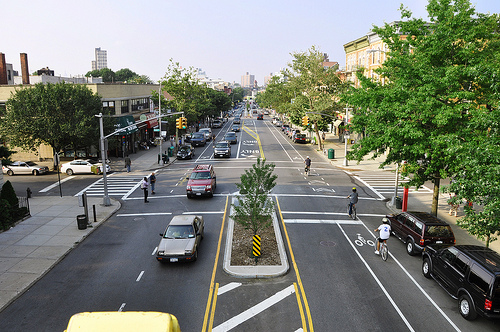Researchers: David Noyce (PI), Andrea Bill, Ghazan Khan, Zhixia (Richard) Li
Primary Project Objectives
In recent times, both transportation professionals and others have begun to realize the consequences of an auto-centric approach to transportation. Several movements have been developed to offer alternative solutions which are more inclusive to all available transportation options. These movements include Complete Streets- which is complimentary ideas and approaches with the overall goal of developing communities that are not dependent on vehicles. With the passing of Wisconsin’s Pedestrian and Bicycle Accommodations law, this shall ensure that bikeways and pedestrian ways are established in all new highway construction and reconstruction projects funded in whole or in part from state or federal funds.

The objective of this research was to determine the applicability of the 2010 Highway Capacity Manual (HCM) pedestrian level of service (LOS) methodologies in the evaluation and development of pedestrian facilities on small town highway reconstruction projects. The current and forecasted pedestrian LOS was compared on two small town corridors which WisDOT had slated for reconstruction within two years. Current LOS was determined using field data, and projected LOS was determined based on WisDOT reconstruction plans. Sensitivity analysis was conducted on the HCM models to determine the effect that factors commonly observed in small towns (such as low traffic and pedestrian volumes) have on the overall LOS score.
